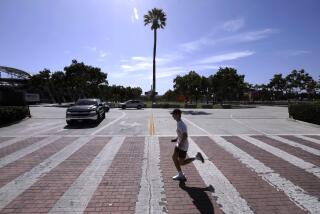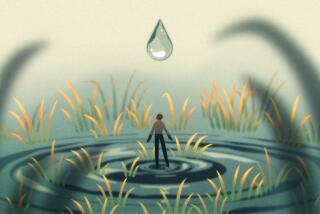LANDSCAPING : Reap Better Energy Efficiency
The nicest thing about energy-efficient landscaping is that it pays off year after year.
So if your home’s energy bills seem high, check the landscaping to see if different plants or positions will help.
It should--in winter, in summer and the in-between months.
Start now by considering the cooling comfort of a shady spot on a hot day. Trees can be used in much the same way to strategically shade a home from the most intense sunlight.
Conversely, in winter, the sun--if not blocked by landscaping--will supply free solar heat.
Deciduous trees are ideal for energy-efficient landscaping because they provide shade during the warmest months but allow the sun to reach and warm the house in winter, cutting heating costs.
A University of Arizona study some years ago reported that exterior shading was seven times more effective than interior cooling.
The study, by horticulturists William Miller and Charles Sacamano, found that an outside wall in full sun transmits three times the heat of a shaded wall to the interior of a structure. It said an unshaded roof adds to the interior twice the heat of a shaded one.
A dense tree canopy was estimated to screen out at least 80% of the full-sun radiation and reduce the maximum high temperatures inside a typical house by 20%.
In a similar context, the Salt River Project, a major supplier of electricity in Arizona, advised customers that, after they mature, three trees planted on the west and southwest sides of a house can save $50 to $100 in summer-cooling costs.
Few areas of California receive as much sunshine as Arizona, but the basic premise will be correct for any climate.
In setting out landscaping plants, be sure to consider how shadows move throughout the year. While the sun always travels on an east-west arc, the arc varies as the sun moves from the southern sky in winter to the northern sky in summer.
About June 21, the summer solstice, the sun reaches its highest point. The sun is lowest about Dec. 21, the winter solstice. As days lengthen and seasons change, so do the shadow directions and lengths.
The University of Arizona study found that at noon in southern Arizona, a 40-foot tree will cast a 58-foot shadow at the winter solstice on Dec. 21, a 25-foot shadow at the spring and fall equinox (March 21 and Sept. 22) and a six-foot shadow at the summer solstice (June 21).
Heat or cooling will also be lost or gained through the home’s building materials. Insulation will help, and sealing cracks around doors and windows is essential. But there always will be some conduction through the building, no matter how good the insulation and sealing.
That’s why properly placed plants are important in reducing the differences in inner-outer wall surfaces.
Plants also can contribute to energy conservation and living comfort by directing the airflow around a home. Windbreaks should be planted perpendicular to wind direction to reduce the wind’s effect. Channel cooling breezes by creating an opening at appropriate places in the windbreak planting.
Another good strategy is to shade the outside air-conditioning unit. Well-placed small trees or evergreen shrubs will aid its cooling capacity and cut costs. Be sure not to block the discharge area.
If the idea of shading walls with vines sounds appealing, be sure to determine first if they can cause physical deterioration of the wall or become invasive to the house.






